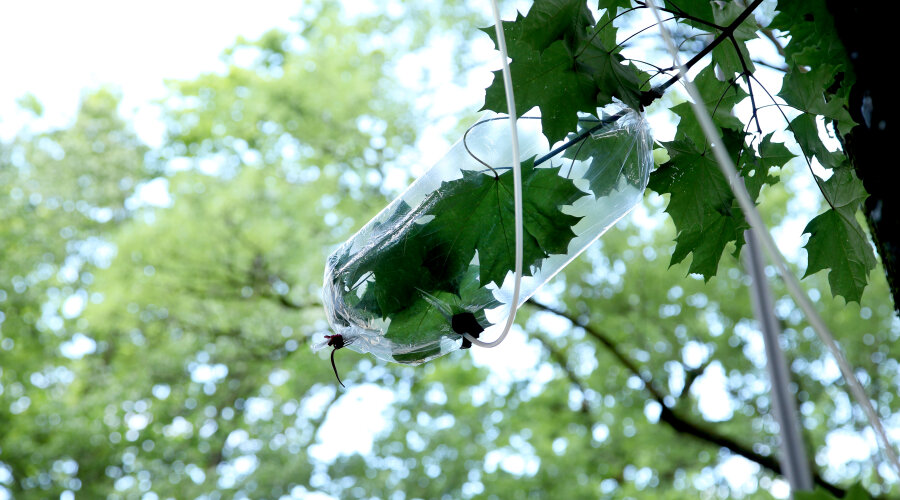Agnes Meyer-Brandis uses artistic and scientific methods to survey the invisible. Over the last few years, she has realised installations, performances and participatory projects at climate research stations in Europe, taking her audience into the forest, the clouds or the floating matter in between.
In the joint workshop with molecular biologist Manuel Selg, participants will learn about the scientific method for measuring odours (VOC measurement) using the concrete example of a ginkgo tree and thus, as well as in the explanations and conversation with the artist, take part in a central step in the realisation of the artist’s One Tree ID project exhibited on site.
Agnes Meyer-Brandis (DE)
Agnes Meyer-Brandis is a Berlin based artist that creates works on the fringes of science, fiction, and fabulation. Educated first in mineralogy, followed by studies at the art academies in Maastricht, Düsseldorf, and Cologne, she has been the founder and director of the Research Raft, an Institute for Art and Subjective Science that is purposefully "asking questions but gives no answers" in fields such as climate research, environmental studies, meteorology, as well as synthetic and artistic biology. Meyer-Brandis’ work has been exhibited worldwide and awarded many prizes, including two Prix Ars Electronica Awards of Distinction, and the European Kairos prize.
ffur.de
onetreeid.de
teawithatree.com
Manuel Selg (DE)
Manuel Selg received his Ph.D. in molecular biology from Loyola University Chicago (US). After many years of basic research in the medical field he took a position as a Molecular Biology Professor at the University of Applied Sciences Upper Austria in 2004. Today, he is study program director of the “Bio- and Environmental Technology” study program. Selg has been active in the field of bioart for about 15 years. He has worked on a wide range of projects with various artists, curated several exhibitions and is very fond of using bioart as a means of promoting social dialogue.





























